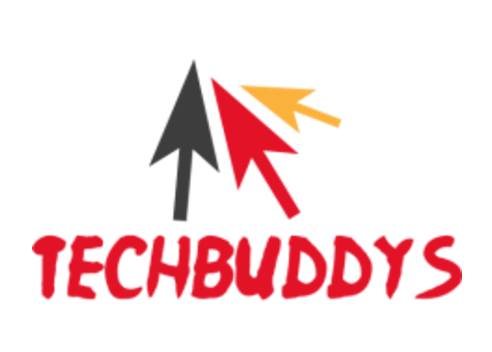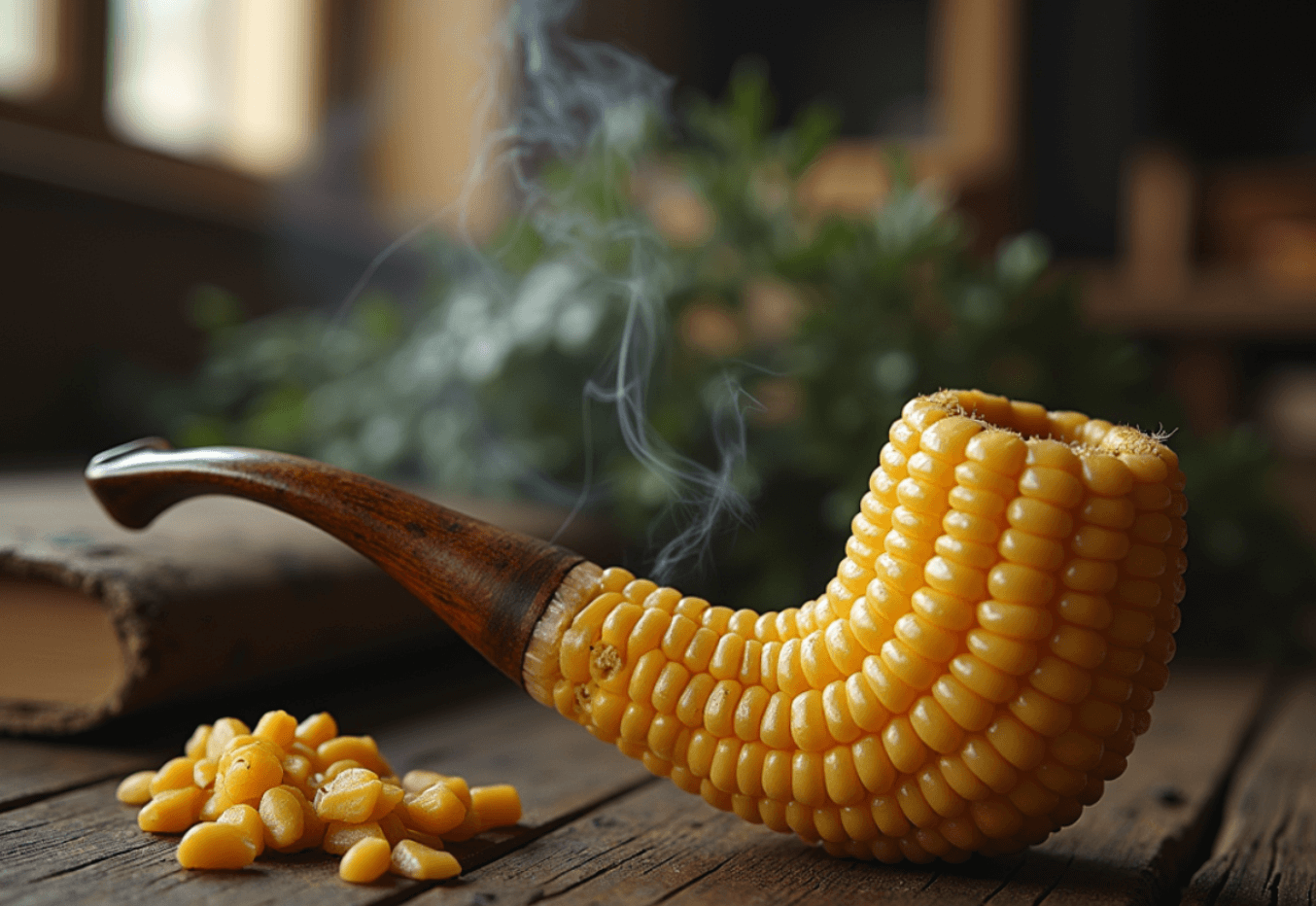The Huck Finn Corn Cob Pipe stands as a beloved tribute to one of America’s most cherished literary characters. This barrel-shaped pipe, crafted by the Missouri Meerschaum Company, features a short stem with a long amber bit and a light yellow varnish coating that captures the rustic charm of Mark Twain’s adventurous hero.
Part of the distinguished Hannibal Collection pipe series, which includes companion pieces like the Mark Twain and Tom Sawyer models, this pipe offers smokers a perfect 10-30 minute smoking experience.
The pipe’s smaller chamber and natural finish deliver a remarkably cool smoke that has earned praise from both novice and experienced pipe enthusiasts.
Its lightweight design makes it ideal for clenching, and the unique characteristics of the corn cob material, including occasional natural chipping, add to its authentic character.
Many users report that this pipe outperforms more expensive briar alternatives, with its ability to provide a smooth, bite-free smoke even during frequent puffing.
The Huck Finn pipe embodies the free-spirited, down-to-earth nature of its namesake character, making it a tangible connection to Twain’s timeless tale of adventure along the Mississippi River.
The Role of Illustrations in Huck Finn’s Legacy
Historical Significance
E.W. Kemble’s original illustrations for The Adventures of Huckleberry Finn profoundly shaped how readers first visualized the characters in 1884.
Using a young boy named Cort Morris as his sole model, Kemble created 174 illustrations that became deeply intertwined with the text, often appearing at the start of each chapter.
These drawings, while skillfully executed, have sparked debate for their portrayal of Jim, as they sometimes undermined the character’s dignity through stereotypical representations.
Visual Evolution
The placement and design of illustrations played a crucial role in the first American edition. The intimate connection between text and image was achieved through careful positioning, with illustrations often intertwining with chapter openings and creating meaningful juxtapositions when placed on facing pages.
For example, illustrations showing Huck standing over a kneeling Jim facing an image of Huck before Judge Thatcher created powerful visual commentary on racial relationships in the antebellum South.
Modern Interpretations
Contemporary artists and digital tools are reimagining Twain’s classics through new mediums. AI art generators are now creating fresh interpretations of the novel’s scenes, offering modern perspectives on the classic tale.
Digital preservation techniques are helping maintain and restore historical illustrations while making them accessible to new generations. This technological evolution allows for:
High-resolution analysis of original artwork
Digital reconstruction of faded elements
Authentication of historical illustrations
Creation of new interpretations through AI
Digital Transformation
The preservation of Huck Finn’s visual legacy has entered the digital age, with computer vision technology playing a vital role in analyzing and protecting historical illustrations.
Modern AI tools can detect subtle signs of deterioration in original artwork and help in restoration efforts, ensuring these cultural artifacts survive for future generations.
Cultural Impact
The illustrations in Huckleberry Finn continue to influence discussions about race and representation in American literature. Twain himself recognized the power of visual images, understanding that they could have “a major influential effect on his readers”.
This awareness of illustration’s impact remains relevant today as new artists and technologies reinterpret the novel for contemporary audiences.
Through this evolution from Kemble’s original 174 illustrations to modern AI-generated interpretations, the visual legacy of Huckleberry Finn demonstrates how artistic representation can both reflect and challenge societal views across generations.
The ongoing digital transformation of these illustrations ensures their preservation while opening new possibilities for artistic interpretation and cultural understanding.
The Corn Cob Pipe: A Symbol of Americana
Historical Origins
The corn cob pipe emerged in the early 19th century when Dutch immigrant Henry Tibbe observed a local farmer using one in Washington, Missouri in 1869.
After refining the design, Tibbe patented a unique process of applying a plaster-based coating to the pipes in 1878, making them smoother and more durable.
Cultural Symbol
The corn cob pipe became deeply woven into American rural identity, representing simplicity and self-reliance. These pipes were particularly popular because they were:
Affordable for anyone regardless of economic status
Easy to craft from readily available materials
Durable enough for daily use
The Huck Finn Model
The Missouri Meerschaum Company honors this legacy through their Huck Finn pipe, which features:
- A short stem with long amber bit
- Light yellow varnish coating
- Natural corn cob material
- 10-30 minute smoking capacity
Customer Experience
Users consistently praise the Huck Finn pipe for its exceptional performance:
- Smokes cooler than expensive briar pipes
- Never burns or bites the tongue
- Perfect for short smoke breaks
- Lightweight and comfortable for clenching
Design Philosophy
The Huck Finn pipe’s design reflects its namesake’s character through:
Unpretentious Construction: The natural corn cob material mirrors Huck’s preference for simplicity
Practical Size: Its compact form suits an adventurous lifestyle
Rustic Finish: The yellow-stained lacquer preserves the corn cob’s natural texture
Modern Legacy
Today, the Missouri Meerschaum Company remains the world’s oldest and largest manufacturer of corn cob pipes. Their Huck Finn model continues to earn five-star reviews from customers who appreciate its combination of traditional craftsmanship and practical design.
The pipe represents a uniquely American tradition that connects smokers to the country’s agricultural heritage and literary history.
The Intersection of Visual Media and Cultural Artifacts
Visual Legacy
E.W. Kemble’s original 174 illustrations of The Adventures of Huckleberry Finn set the foundation for how generations would visualize this American classic.
Using a young model named Cort Morris, Kemble created images that became deeply intertwined with Mark Twain’s text, shaping readers’ perceptions of the characters and their world.
Modern Preservation
Digital platforms now serve as vital repositories for Huck Finn’s visual heritage. Visual storytelling has evolved to engage modern audiences through various mediums, from traditional illustrations to AI-generated artwork. This digital transformation allows for:
- High-resolution analysis of historical artwork
- Digital restoration of original illustrations
- Creation of new interpretations through contemporary tools
The Hannibal Collection
The Missouri Meerschaum Company honors this legacy through their Hannibal Collection, featuring three distinctive pipes:
Huck Finn Pipe: Features a short stem with amber bit and light yellow varnish
Tom Sawyer Pipe: Showcases a barrel-shaped yellow bowl
Mark Twain Pipe: Includes a Dublin-style bowl for longer smokes
Cultural Impact
The corn cob pipe remains a powerful symbol of American rural identity. After Dutch immigrant Henry Tibbe refined the design in 1869, these pipes became deeply woven into American culture. Today, the Missouri Meerschaum Company produces over 3,000 pipes daily, maintaining this uniquely American tradition.
Modern Relevance
The intersection of visual media and cultural artifacts continues to evolve. Digital platforms help preserve these cultural touchstones while making them accessible to new generations.
The Huck Finn pipe, in particular, represents both literary heritage and practical craftsmanship, selling for $4.49 and earning praise for its authentic design and superior smoking quality.
Read More: Emerson Icon: Redefining Innovation, Trust, and Personal Growth in the Digital Era
Why These Symbols Endure?
Enduring Themes
Huckleberry Finn’s story continues to resonate through its powerful themes of freedom and moral growth. The corncob pipe serves as a tangible symbol of these ideals, representing both rebellion against societal norms and the search for personal independence.
Through his journey down the Mississippi River, Huck’s moral compass evolves as he grapples with questions of right and wrong.
Visual Legacy
The pipe appears in countless illustrations as a visual shorthand for Huck’s character development. Early illustrators began incorporating this element to convey the rawness and authenticity of his personality.
Modern interpretations continue this tradition while adapting to contemporary sensibilities, often using the pipe as a symbolic rather than literal element.
Literary Connection
The Missouri Meerschaum Company honors this legacy through their Hannibal Collection, which includes pipes named after Twain’s beloved characters. The Huck Finn model features:
- A short stem with amber bit
- Light yellow varnish coating
- Natural corn cob material
Cultural Impact
The corncob pipe bridges the gap between literary imagination and tangible tradition. As a symbol of rural American identity, it represents:
Freedom from societal constraints
Connection to agricultural heritage
Simple, self-reliant values
This connection helps modern readers understand the deeper themes of Twain’s work. The pipe serves as both a literary device and a physical artifact, allowing readers to literally hold a piece of American literary history.
Through these enduring symbols, Huck’s journey of moral development and search for freedom continues to speak to new generations.
Conclusion
The corncob pipe remains an enduring symbol of American independence and literary heritage. Through Huckleberry Finn’s character, this simple object represents freedom from societal constraints and connection to rural American values.
The Missouri Meerschaum Company honors this legacy through their Hannibal Collection, which includes pipes named after Twain’s beloved characters.
The pipe’s significance extends beyond mere accessories – it embodies the rebellious spirit that defines Huck’s journey down the Mississippi River. Just as the river symbolizes escape from civilization, the corncob pipe represents rejection of societal norms and embrace of personal freedom.
Today, these pipes continue to bridge the gap between literary imagination and tangible tradition. Whether in classic illustrations or modern interpretations, the corncob pipe serves as a visual shorthand for independence, simplicity, and the quintessentially American spirit of adventure.
Through this enduring symbol, readers across generations connect with Huck’s timeless quest for freedom and self-discovery.


